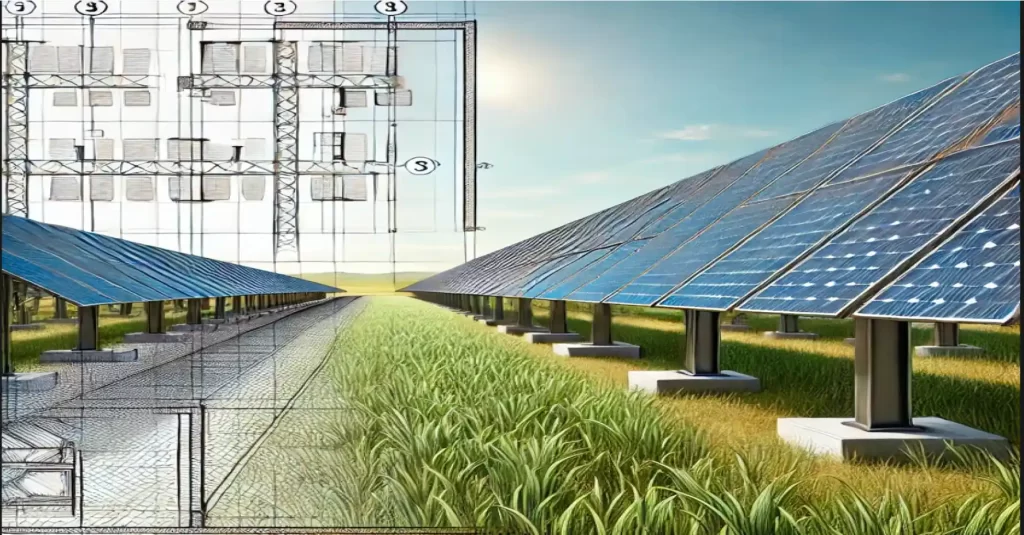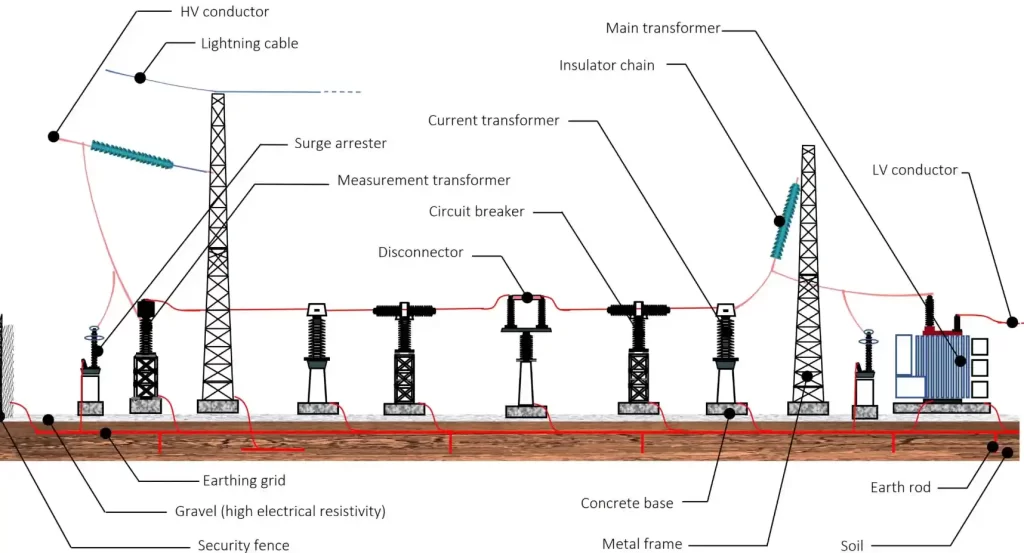- Kernkonzept: Was macht ein kleines Umspannwerk aus?
- Anwendungen von kleinen Umspannwerken
- Markttrends und Hintergrund
- Technische Daten auf einen Blick
- Kleine und große Umspannwerke: Was ist der Unterschied?
- Kauftipps: Wie man eine kleine Umspannstation auswählt
- Zitierte und empfohlene Quellen
- Häufig gestellte Fragen
Kernkonzept: Was macht ein kleines Umspannwerk aus?
A kleines Umspannwerk-auch bekannt als kompaktes Umspannwerk oder Mini-Umspannwerk-ist eine vollständig integrierte Stromverteilungseinheit, die Folgendes umfasst:
- Mittelspannungs-Schaltanlagen
- Verteilertransformator
- Niederspannungsschalttafel
- Alles in einem wetterfesten, werkseitig montierten Gehäuse untergebracht
Diese Umspannwerke übernehmen in der Regel 100 kVA bis 2500 kVA und arbeiten innerhalb 11-kV-, 22-kV- oder 33-kV-Systeme. Ihr kompaktes Plug-and-Play-Design ermöglicht eine schnelle Installation und minimale Bauarbeiten, was sie ideal für schnell wachsende städtische und ländliche Gebiete macht.
Anwendungen von kleinen Umspannwerken
Kleine Umspannwerke sind weit verbreitet in:
- Wohn- und Geschäftshäuser
Herabsetzung der Spannung auf 400 V für den Einsatz im Haushalt oder im Büro - Industrielle Standorte
Stromversorgung kleinerer Maschinen oder lokaler Prozesseinheiten - Anlagen für erneuerbare Energie
Funktion als Verbindungspunkt zwischen Solar- oder Windparks und dem Stromnetz - Mobile Stromaggregate
Einsatz im Bergbau, auf Ölfeldern und bei temporären Bauprojekten - Abgelegene oder ländliche Elektrifizierung
Versorgung von Gebieten mit Strom, in denen der Netzausbau begrenzt ist

Markttrends und Hintergrund
Gemäß IEEMA und IEA Berichten zufolge steigt die Nachfrage nach kleinen Umspannwerken weltweit aus folgenden Gründen:
- Rasche Urbanisierung und ländliche Elektrifizierungsprogramme
- Wachstum bei Solaranlagen auf Dächern und Mikronetzen
- Zunehmende Abhängigkeit von dezentralen Energiesystemen
- Projekte zur Entwicklung einer intelligenten Stadt
Kleine Umspannwerke, insbesondere vorgefertigte und auf Skids montierte Typen, sind ein wichtiger Bestandteil der dezentralisierte EnergiestrategienSie bieten eine zuverlässige lokale Stromversorgung, ohne den Platzbedarf von großen Umspannwerken.
Nach Angaben von WikipediaDie kompakten Umspannwerke sind Teil eines umfassenderen Vorstoßes zur Verbesserung der Energieeffizienz und zur Verringerung der Verluste bei der Lieferung auf der letzten Meile.
Technische Daten auf einen Blick
| Komponente | Typischer Bereich / Wert |
|---|---|
| Nennspannung | 11kV / 22kV / 33kV |
| Transformator Kapazität | 100 - 2500 kVA |
| LV Ausgangsspannung | 400V / 415V |
| Frequenz | 50Hz / 60Hz |
| Schutzklasse | IP44 - IP65 |
| Gehäusetyp | Außenbereich mit Metallverkleidung oder Kiosktyp |
| Art der Kühlung | Ölgefüllter Transformator oder Trockentransformator |
| Einhaltung von Normen | IEC 62271, IEC 60076, IEEE C57 |
Kleine und große Umspannwerke: Was ist der Unterschied?
| Merkmal | Kleines Umspannwerk | Großes Umspannwerk |
|---|---|---|
| Leistung Kapazität | 100 - 2500 kVA | Über 5000 kVA |
| Spannungsebenen | Bis zu 33kV | Bis zu 400kV oder mehr |
| Fußabdruck | Kompakt (1-3 m²) | Großes Gebiet (mehrere Gebäude) |
| Installationszeit | 1-2 Tage | Wochen oder Monate |
| Anwendungen | Lokale Verteilung | Regionale Netzsteuerung |
| Personalisierung | Begrenzt | Hochgradig anpassbar |

Kauftipps: Wie man eine kleine Umspannstation auswählt
Bei der Auswahl einer kleinen Umspannstation ist Folgendes zu beachten:
- Lastanforderung: Bestimmen Sie die Transformatorgröße anhand der Spitzenlast (in kVA).
- Umwelt: Wählen Sie ein Gehäuse mit der Schutzart IP54+ für staubige oder feuchte Bereiche.
- Typ des Transformators:
- In Öl getaucht: Effizienter und kostengünstiger
- Trockener Typ: Sicherer in Innenräumen und für brandgefährdete Bereiche
- Schutzsysteme: Vergewissern Sie sich, dass die Niederspannungsschalttafel MCCBs, Überspannungsschutzgeräte und Messgeräte umfasst.
- Mobilität: Für den vorübergehenden Einsatz sind auf Kufen oder Anhängern montierte Geräte ideal.
Renommierte Anbieter wie ABB, Schneider Elektrisch, Siemensund aufstrebende Hersteller wie PINEELE bieten eine breite Palette von IEC/ANSI-zertifizierten Kompaktstationen an.
Zitierte und empfohlene Quellen
- IEEE C57-Serie - Transformator-Normen
- Wikipedia: Elektrisches Umspannwerk
- ABB Kompakt-Sekundär-Stationen
- IEEMA-Berichte - Entwicklung indischer Umspannwerke
Häufig gestellte Fragen
A: Bei ordnungsgemäßer Wartung können kleine Umspannwerke je nach Umweltbedingungen und Qualität der Komponenten 25-30 Jahre halten.
A: Ja, sie werden üblicherweise zum Hoch- oder Herunterregeln der Spannung in PV-Solaranlagen verwendet und sind ideal für Hybrid-Energieanwendungen.
A: Die meisten Einheiten sind werkseitig montiert und einsatzbereit geliefert. Sie werden mit einem Kran aufgestellt und innerhalb weniger Stunden angeschlossen, was den Arbeitsaufwand auf der Baustelle minimiert.
A klein Leitfaden für Umspannwerke ist mehr als nur eine Miniaturversion eines herkömmlichen Stromverteilers - es ist eine äußerst praktische, effiziente und skalierbare Lösung für die moderne Stromverteilung. Ob für eine Wohnsiedlung, einen Solarpark oder einen temporären Industriestandort - kompakte Umspannwerke bilden das Rückgrat dezentraler Energiesysteme.
Wenn Ingenieure und Entscheidungsträger die Komponenten, Standards und Konfigurationsoptionen kennen, können sie die richtige Lösung wählen, die ein ausgewogenes Verhältnis zwischen Kosten, Leistung und Zuverlässigkeit bietet.


